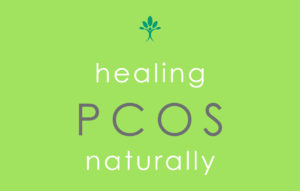by Dr. Sara Kinnon
Have you ever complained about bloating, gas, diarrhea or constipation, itchy skin, fatigue, or frequent headaches? Believe it or not, these are some of the most common complaints seen in Celiac Disease.
Celiac Disease, also known as Celiac Sprue, is typically thought of as strictly a gastrointestinal disease, manifesting in chronic diarrhea and/or constipation. However, new research and improved diagnostic techniques are proving otherwise. Celiac Disease is an immunological disease in which a patient is hypersensitive, or reactive, to gluten. Gluten is a protein in grains like wheat, barley and rye. When a person who is hypersensitive to gluten ingests gluten, it damages the small intestine leading to malabsorption and subsequent problems.
In recent years, with improved diagnostic testing, it has been determined that as many as 1 in 100 people in North America are suffering from Celiac disease. On average, it takes a person 9 -11 years to be diagnosed with Celiac disease. It is common to be diagnosed with IBS, eczema or other skin irritations, fibromyalgia, GERD, or migraines before the actual diagnosis of Celiac disease. Other conditions associated with Celiac are weight loss/obesity, diabetes, PCOS, osteoporosis frequent colds, multiple food sensitivities, and even clumsiness. In children, a hallmark symptom is irritability! If you have chronic muscle cramps, canker sores, insomnia, MS, or chronic constipation it is worthwhile to explore the possibility of Celiac disease.
Why is Celiac disease a concern? Undiagnosed celiac disease can lead to a lifetime of suffering of the common complaints as mentioned earlier. It can also increase the risk of developing autoimmune disorders of the thyroid, increase the risk of developing cancer, and even cause some neurological damage. The good news is that removing gluten from the diet will often improve or reverse much of the damage.
The current gold standard for diagnosis is through an intestinal biopsy; however, there are simple blood tests that are done prior to this to test for antibodies against gluten. These antibodies are produced by the body, in response to the gluten that it deems foreign. If there is a first degree relative with a positive test result, all family members should be tested, even if symptomatic as many celiacs can remain symptom free, while the damage is continuously being done.
Once a diagnosis is made, gluten is eliminated from the diet. Gluten is in wheat, barley, rye, and oats. While oats don’t contain gluten, they are often contaminated with gluten due to being manufactured in the same facility. A patient can expect symptoms to improve 2-4 weeks after eliminating gluten. How important is it to eliminate completely? Research suggests that even one molecule of gluten per day is enough to cause intestinal damage. Patients must remain gluten free for life, or risk a significant increase in mortality, not to mention discomfort! Not to despair, mortality risk is often back to ‘normal’ within a year of living gluten free. Gluten is not only in the food we eat, but also in products like cosmetics, glues, and medications.
Naturopathic medicine can help with the challenges of the gluten free diet, providing nutritional advice and support, assessing and repairing damage, and correcting any deficiencies.
Going gluten free is often overwhelming and extremely time consuming. There is help out there! In addition to a naturopathic physician, many websites like www.celiac.com offer tips, recipes, and message boards. Search your local bookstore and you will find a plethora of gluten-free living cookbooks. Some recommendations are Gluten Free Diet by Shelley Case, and even Living Gluten Free for Dummies.
If you are suffering from a chronic illness, have gastrointestinal complaints, or simply unexplainable and unrelenting fatigue; it is wise to consider Celiac disease. Eliminating gluten from your diet just might bring you the relief that you have been seeking for many years.
Living Gluten-Free doesn’t mean you can’t have treats!
Gluten Free Chocolate Chip Oatmeal Cookies
This is adapted from a Bob’s Red Mill recipe; so all flours are Bob’s Red Mill brand.
Ingredients:
1-1/2 cups Gluten Free All Purpose Baking Flour
3 cups Gluten Free Rolled Oats
1 cup Butter (softened)
1 cup Brown Sugar
1/2 cup Granulated Sugar
1 tsp Vanilla
1 tsp Baking Soda
1/2 tsp Sea Salt
1/2 tsp Cinnamon
2 large Eggs* (free range, hormone free)
1 tsp Xanthan Gum
1-cup GF chocolate chips
1 cup chopped pecans
1/2 cup Raisins (Unsulfured) (Optional)
Preheat oven to 350°F. Beat butter and sugars together until smooth.
Add vanilla and eggs; beat well. In a separate bowl, blend flour,
Cinnamon, baking soda, salt and Xanthan Gum. Stir flour blend into wet
ingredients. Add oats, chocolate chips, nuts and raisins (if desired)
and mix well. Drop rounded tablespoons of dough onto un-greased cookie
sheet. Bake for 10 – 12 minutes, or until golden brown. Cool one
minute then transfer to wire rack. Makes about 4 dozen cookies.
Eggless Option: Mix together 2 Tb. Flaxseed Meal with 6 Tb. of water
and let sit for a minute. Add to recipe as you would the eggs.
Ruth’s NOTE: I would think Egg Replacer would work, too.
Adapted from a recipe found at:
http://www.bobsredmill.com/recipe/detail.php?rid=1428



Comments are closed.